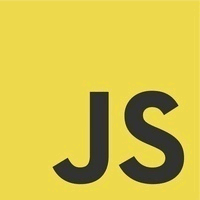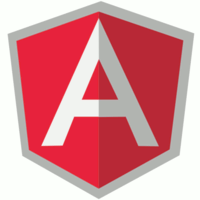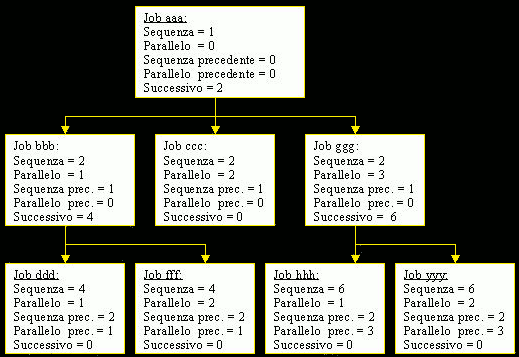
 ℂ
Cobol
. Html
. Debug
. Note
. Db2
. Oracle
. PostgreSql
. Video
. Job S. & M.
ℂ
Cobol
. Html
. Debug
. Note
. Db2
. Oracle
. PostgreSql
. Video
. Job S. & M.
 Javascript
. Calendar
.. overview
.. function
Javascript
. Calendar
.. overview
.. function
 Vue
. overview
Vue
. overview
 AngularJS
. overview
AngularJS
. overview
 React
. overview
. Tips
. Contact us
React
. overview
. Tips
. Contact us
|
Future is here
"All your dream projects can become reality"
|
Why not watch costs and increase efficiency
| |
|
| |
|
(Business Services and Web Service are made of Cobol)
| | |
All the products made with Cobol and
Html are usable on any appliance equipped with brouser, for decades, run on smartphones,
on the TV, on the refrigerator, without any "driver", without daily updates.
The programs and the user profile control each element of the page in the sense of
visibility, modifiability, focus etc. Instead the colors the fonts the mobility between
the pages, are completely free.
Graphics are separate from management,
the html pages are separate from programs, they are self-contained, they
can be completely changed, a fundamental point to underline, the pages
are driven, everything is decided in the programs, the page asks, the program
disposes. The pages are the projection and do not constrain navigation. On average
in management projects the user interface (UI, User Interface) does not reach
double figures and must not constrain to tortuous artifices of mobility and data
management.
Do you have in character interface (3270)?,
to transform it into HTML, just a click, more than a quarter of a century of
experience, response times, maintenance in the order of fraction in comparison
with other languages.
Comparison with other languages
Today the fashion languages are OOP, three decades old designed for CPUs, backward
by three generations, in the meantime we have switched to GPUs and use NPUs, where
they fill blackboards and have significant characteristics, do not reduce:
(1) development times
(2) calculation times
(3) maintenance times
(4) software engineering times.
The OOP programming is perfect for simple, school themes, the dot two sums up, but,
you have ever seen a juggler or a knife thrower that is varied his objects. An example
of OOP: if you do not have version 17 does not start the Developer, the point follows:
(5) you have become "dependent version".
(6) Forced to use various cache management products, streamline in log analysis,
off-line debugging, dozens and dozens of libraries that no one knows the contents of,
... etc.
Reflections,
Surely it is nice to have accordion objects with dozens of attributes
and use only a few, ordered at will but it is not without contraindications. What
changes between a Copy and a Class... between a Call and a Package? Surely it changes
at the closing of the Call and waiting for the return of a message, the return-code
of each instruction and the management of exceptions, the html pages managed by the
graph and the inspective and unmanageable skein in other cases.
| |
| |
Essential Debug
(the cobol controls the cobol) and Debug Z/Os |
< |
|
>
| |
The added value we offer you without additional tools
or burdens:
Essential Debug, made with only Cobol - "free".
For the http web functions you must activate the starting point online,
(changing the url from .../COBWEB.cgi?1?.. to .../COBWEB.cgi?3?..)
from a remote terminal you can trigger the debugging, as in the images above. The
data dictionary, used to view or modify the content of the data is done in rexx,
analyzing the sources and includes the copies.
Alternatively, for the Cics-TS environment,
you can use the IBM debugging, a complete and sophisticated product, intercepts web
transactions in debugging, giving maximum operation and at any time releases control
to the user.
The quality of the product is directly proportional to the quality of the debugging,
the modality and timeliness of intervention.
Active Commands:
BOTTOM ⇒ is positioned at the end of the listing
CLEAR ⇒ cancels the "variable + value" highlighted with MONITOR
FIND/F + "value" ⇒ search in the program
HELP ⇒ summarizes the active controls and functions
MONITOR ⇒ highlights the content of the "variable + value",
in the case of a structure shows the enne lines of the individual fields
MOVE "value"/variable1 TO variable2 ⇒ sets the content ("value") of the variable2
TOP ⇒ is at the beginning of the list of the program
Active Functions:
f1 ⇒ lists the active
f2 ⇒ functions advance by a step
f3 ⇒ closes the debug
f4 + the cursor in the field ⇒ displays the content
f5 + written in "command line" ⇒ search in the listing
f6 + cursor in "prefix line" ⇒ activates the breakpoint or removes it if repeated
f7 ⇒ moves a page backward
f8 ⇒ move in advance of a page
f9 ⇒ advance to the "stop run" or the next breakpoint
f11 + the cursor in the field ⇒ displays the content of level 01
f12 ⇒ retriever of executed commands
|
| |
Notes and Structure
In the early 1970s, J.D. Warnier published: defined the input and output the program
is automatically defined. In the 1990s a second US wave defined the
"The Mythical Man-Month", metric with the factors for language and methodologies.
Nothing has taken consistency, if you don't, if you don't use the framework,
if you don't use an cryptic language to write an html, if you don't produce software
on floating libraries you're antiquated (Mhmm, a building without foundation).
The Cobol
Rethought and reorganized like any hardware project,
do not think about the imagination of a novelist or the cobweb of a relational D.B.,
we must see the software as a fluid, multi-layered and multi communicating chip,
simplifying how chessboard, where the elements are only two, the Routine (objects)
and the Programs. Programs have only one main structure closed, who assembles
fills each individual area with the functions of that area, for example:
- call routine reading page
- receiving data from the page and filling D.B.
- recall of calculation routines
- variable string for the page
- compose permits of individual fields
- next page
- first access
- access to D.B. for single reading
- etc. etc.
The unsolicited areas remain empty, the interventions of variation and maintenance
are of immediate identification. Routines play a specific function, for example: the
"merge parser" routine, of the variables string in the pages.
The management philosophy was born in the Z/Os environment, designed to be transported
and climbed to a laptop. The user side requires only the browser, for the nostalgic
Neanderthalians (or for good cause) of a printer.
As a development environment, we present the Linux version, where you have fewer
constraints and more interest. Consider that in all cases the user interface is not
developed in the Mainframe environment for ease and ease of testing.
Two fundamental objects for the dialogue between the page and the programs are:
(A) the parser of the variable fields with the page and sending the
page to the browser (html pages are files distinct from the programs),
(B)
the receipt of the page to the program (passage from string
to individual variables) equivalent for all environments.
Two simple programs in Cobol Linux and two functions of the Cics-TS in the case of
Mainframe.
Json e Xml
You have to create Xml or Json files, very simple, configure for example with the
GnuCobol the libraries, in our case the last three are enough:
sudo apt install curl libgmp-dev db-util db5.3-util libdb5.3++-dev libdb5.3-dev gawk
clang libdb5.3++ ncurser libcob4-dev libcob4t64 libgmp-dev libgmpxx4ldbl
libncurses-dev libxml2 libjson-c-dev libjson-5c
All required during the Cobol configuration, in the software folder proceed with:
./configure --with-xml2 --with-json
make
sudo make install
In the program you can use the two instructions: JSON GENERATE and XML GENERATE that
transform the copy into structure.
Cobol or "C"
We have always talked about Cobol but using GnuCobol we should talk
about "C" (GCC) given the automatic conversion before compiling.
Cobol and Java
Obviously the two languages are not mutually exclusive, the solution where the
Cobol uses Java is the optimal condition, the potential of both are exploited,
version of Cobol type isCobol or Micro Focus give a rich documentation.
Reflection; but even Oracle cannot keep up with Java versions, (example
SqlDeveloper) perhaps in your immense wisdom you don't feel in the cinodrome.
What to install:
- a Cobol (GnuCobol o ...)
- a framework (Komodo, Ibm.Openeditor, Opencobolide, VSCodium, V.S.C. Aibber.base, etc.)
- for the basic substrate (Aibber.base for management folder, etc.)
management are used: Regina (rexx), The (Hessling editor with xclip (X11) and
wl-clipboard (Wayland)), Perl
- a web serser http (Apache2 or ...)
- database (Db2, Oracle, PostgreSql and ...) of course if the management requires
| |
Post Scriptum:
Convert a table unload from Mvs (ebcdic) to (ascii); The table contains Binary and Comp-3
fields, how do you proceed? The cobol version (GnuCobol 3.2) does not include
"RECORD IS VARYING IN SIZE ..", it is necessary to intervene on the "PIC" of the input file,
the generalized conversion program becomes specific with:
(1) fix "SELECT .." and "FD .." without parameters
(2) "PIC " length + 1 track from MVS
(3) file sectioning from MVS with "aibbercopy.pl"
(4) "INSERT" in table directly in the conversion program
( The only solution allowed)
Unload-file (ebcdic):
./bin/aibbercopy.pl 113 ./tabelle comu2.binary comu2.113
Utility (NTEBCDIC):
....
SELECT ARCHIN ASSIGN TO EXT-I-FILES
FILE STATUS IS FILE-STAT.
....
FD ARCHIN.
01 REC-ARCHIN PIC X(114).
....
Structure of the table:
regina ./bin/ll_db21.rexx 2 ./source/include/RSCO2DCL.sqb ./str/comu2.str
Input parameters (NTEBCDIC.src):
....
-157- file
CODE=E037-UTF8
LRECL=113
FILE-INPUT=/home/luc/d/cobol/tabelle/comu2.113
FILE-OUTPUT=/home/luc/d/cobol/tabelle/comu2.ascii
FILE-STRUCTURE=(A),00,00,/home/luc/d/cobol/str/comu2.str
....
Run:
./loadlib/NTEBCDIC A ./bin/NTEBCDIC.src
Utility (aibbercopy.pl):
#!/usr/bin/perl -w
# ----------------------------------------------------- #
# - Split file (Aibber) - #
# ----------------------------------------------------- #
# - - - -
# example:
# perl ./aibbercopy.pl 143 ./temp cl040_cid.txt cl040_cid.sql
# parms: length folder file-binary "file-binary + \n"
# - - - -
# $Args = $#ARGV + 1;
$lrecl =$ARGV[0];
$dirmain=$ARGV[1];
$filein =$ARGV[2];
$fileout=$ARGV[3];
my($buf)="";
# - - Open
$filename = "$dirmain/$filein";
open(FILEIN, "<$filename")
or die goto FINE_MAIN_ERROR;
open(FILEOUT, ">$dirmain/$fileout")
or die "can't redirect FILEOUT";
select(FILEOUT); $| = 1; # make unbuffered
#
#-----Loop (1) Lettura per Split--------------#
#
$loop = 1;
$linee = 0;
while ($loop > 0) {
$bytes = read( FILEIN, $buf, $lrecl);
if ( $bytes < 1) {
$loop -= 1;
} else {
#---scrive il file di output---------------#
print FILEOUT "$buf\n";
$linee += 1;
} #--- end else
}; #--- end while (loop)
# - - Loop (1) Fine
# - - Close files
close(FILEIN);
close(FILEOUT);
$word = sprintf "%d", $linee;
$line_out = "Ok file::$filename Linee=$word";
goto FINE_MAIN;
FINE_MAIN_ERROR:
$line_out = "Ko file::$filename -- $! -- $0 (Errore +100)";
FINE_MAIN:
# print { $OK ? STDOUT : STDERR } "$line_out\n";
print STDOUT "$line_out\n";
# undef @riga;
exit 0;
# ---------------------------------------------------------- #
# http://www.tutorialspoint.com/perl/perl_read.htm
# http://perldoc.perl.org/index-overview.html
# ---------------------------------------------------------- #
|
|
| |
Install Db2-10.1 express-c su Client Linux (Ubuntu ram 32G)
Used in integrated programs ( embedded database),
the setup of the database and the
three users is quite intuitive, at the beginning the problem of the "share memery"
made me think of trash this D.B., but as often happens it is a triviality. The D.B.
redeems itself with excellent messaging, in anomalies made during development by
Cobol programs. From Manzoni "The man who was born and lived without flaw", the Bind
of the programs is a free, useless and meaningless obstacle during the execution
of the programs, with error -805 and/or -818, forcing tortuous maneuvers for debugs.
Warning: Binary formats do not work, from Cobol to Database.
Required libraries:
sudo apt-get install libpam0g:i386 libaio1
sudo apt-get install ksh
sudo apt-get install lib32stdc++6
sudo apt-get install libpam0g:i386
sudo apt-get install libstdc++6
--sudo apt-get install libaio-dev
--sudo apt-get install gcc-4.9
Check and enable the link, for example:
sudo find / -name "libpam.so*"
sudo ln -s /usr/lib/i386-linux-gnu/libpam.so.0 /lib/libpam.so
./db2prereqcheck
if everything is okay, with root users:
(select only English language otherwise you need the cd)
./db2setup -l /tmp/db2setup.log -t /tmp/db2setup.trc
Update the working user .profile:
# set PATH db2 bin if it exists
if [ -d "/home/db2inst1/sqllib/bin" ] ; then
PATH="$PATH:/home/db2inst1/sqllib/bin"
fi
if [ -d "/opt/ibm/db2/V10.1/bin" ] ; then
PATH="$PATH:/opt/ibm/db2/V10.1/bin"
fi
LD_LIBRARY_PATH=/home/db2inst1/sqllib/lib64
export LD_LIBRARY_PATH
update /etc/profile:
DB2DIR=/opt/ibm/db2/V10.1
export DB2DIR
LD_LIBRARY_PATH="/home/db2inst1/sqllib/lib64"
export LD_LIBRARY_PATH
DB2INCLUDE=/home/luc/d/cobol/source/include
export DB2INCLUDE
update /etc/passwd for the three users with the bash,
for error of share memory:
sudo /opt/ibm/db2/V10.1/instance/db2idrop db2inst1
sudo /opt/ibm/db2/V10.1/instance/db2icrt -u db2fenc1 db2inst1
access and create your db-prefer:
su - db2inst1
db2start
db2 create database db-prefer automatic storage yes
db2 get db cfg for db-prefer
db2 update dbm cfg using SVCENAME 50000
db2set db2comm=tcpip
db2
connect to db-prefer
GRANT DBADM ON DATABASE TO user your_user
GRANT ACCESSCTRL, BINDADD, CONNECT, CREATETAB, CREATE_
EXTERNAL_ROUTINE, CREATE_NOT_FENCED_ROUTINE, DATAACCESS,
DATAACCESS, EXPLAIN, IMPLICIT_SCHEMA, LOAD, QUIESCE_CONNECT,
SECADM, SQLADM, WLMADM ON DATABASE TO user your_user
QUIT
The basic configuration is completed, we check:
su - db2inst1
db2level
db2ls
db2licm -l
db2set -all
Command line: clpplus
Debugging tip:
cmp -b -l (program).bnd (program-debug).bnd ⇒ (Δ2) (Δ1)
if (Δ1) only presence in (program-debug).so launch:
perl -i -pe 's{Δ1}{Δ2}g' (program-debug).so
|
|
| |
Install Oracle-xe-21c su Client Linux (Ubuntu ran 32G)
Used in integrated programs ( embedded database)
you do not have a static IP?
but dynamic, launch the "ip a" command take the inet value: in the section
of the network card (for example 192.168.1.108). Correct in: network settings, ipv4
mode, with manual, address equal 192.168.1.108 and gateway 192.168.1.1.1.1, add the
value of the gateway to the dns, with root user correct the values in "/etc/netplan/"
the most recent ...yaml as:
network:
version: 2
ethernets:
NM-dfghjk9-8927-6754-22d3-0g78907q6613:
renderer: NetworkManager
match:
name: "enp2s0"
dhcp4: true
# addresses:
# - "192.168.1.108/24"
nameservers:
addresses:
- 1.1.1.1
- 1.0.0.1
- 192.168.1.1
dhcp6: true
(eccetera ...)
Attention: the characters (#) count, are the keystone, allow Oracle-xe-21c to see
static IP and the operating system to run in DHCP, make a restart (of the service)
and voilà.
from rpm to deb: sudo alien -c -d --fixperms oracle-database-xe-21c.rpm
install: sudo dpkg -i ./oracle-database-xe-21c.beb
complete the user oracle: change the terminal to "/etc/passwd"
in bash, create the default folder "/home/oracle" change
"chown -R oracle:dba /home/oracle" copy from another user
".profile" and complete it with:
if [ -d "/opt/oracle/product/21c/dbhomeXE" ] ; then
PATH="$PATH:/opt/oracle/product/21c/dbhomeXE"
export PATH
fi
if [ -d "/opt/oracle/product/21c/dbhomeXE/bin" ] ; then
PATH="$PATH:/opt/oracle/product/21c/dbhomeXE/bin"
export PATH
fi
export ORACLE_HOME=/opt/oracle/product/21c/dbhomeXE
export ORACLE_BASE=/opt/oracle/product/21c/dbhomeXE
ORACLE_SID="XE"
export ORACLE_SID
access and complete ".bashrc" with:
cd
if [ -d "/opt/oracle/product/21c/dbhomeXE/bin" ] ; then
PATH="$PATH:/opt/oracle/product/21c/dbhomeXE/bin"
export PATH
fi
. oraenv1
where oraenv1 clone of oraenv with eliminated the selection of the SID, fixed imposed
"XE", we check the groups of the user with:
"cat /etc/passwd |grep /home |grep -v false |cut -d: -f1 |xargs groups
|grep oracle"
we get the list (oinstall dba oper backupdba dgdba kmdba
racdba) if everything is fixed and tested we can install the DB.
configuration from root,
edit: "/etc/hosts" and change the host IP to 192.168.1.108
run: "/etc/init.d/oracle-xe-21c configure"
final controls: run from brouser "https://localhost:5500/em/"
with user: system and (pw) the one set during the install step, try:
"sudo -S /etc/init.d/oracle-xe-21c start"
"sudo -S /etc/init.d/oracle-xe-21c stop "
"sudo -S /etc/init.d/oracle-xe-21c status"
from a procedure for example in rexx:
"push (pw)"
"sudo -S -i -u oracle lsnrctl status"
and the listener/sql from oracle user:
"lsnrctl stop"
"lsnrctl start"
"lsnrctl status"
"sqlplus / as sysdba"
"show pdbs;"
"select * from v$version;"
"select instance_name, status, database_status from v$instance;"
from a manager for example DBeaver setting the data (host: 192.168.1.108 port: 1539
db: XE, SID, "Oracle Database Native", user: sys, pw: (pw), role: sysdba).
With the command:
sudo xhost +si:localuser:oracle
We arrange the display, see dbca, xclock, xeyes, last mole to fix the
clipboard manager, ..
If you think of using the SQL*Loader with csv files you are wrong, it's just
for simple tables without number fields and date fields.
Warning: the timestamp date will be in the format: 'DD-MON-RR' for
queries outside the perimeter, for example with RexxSql.
|
|
| |
Install PostgreSql su Client Linux (Ubuntu ram 32G)
Used in integrated programs ( embedded database)
spectacular first arrival simplicity,
everything unwinds with fluidity and simplicity. Speaking of a product that supports
multiple databases the first hurdle is due to the normalization of include sql, the
built-in do their job, too bad for the cursors, the declaration must be moved close
to the open, involves a supplement of controls.
Sql operations are significantly more cryptic than the previous database approach.
A further difficulty is the complete misunderstanding of the messaging, the anomalies
of the precompilizer are "mythical" there are no references to the Database or to
the source, the same fate for the compiler. Surely its use is geared towards languages
that do not know how to manage traditional keys and rely on surrogate keys, with
the technique (JUnit): if doubles simplify!? Or I don’t understand, but I wrote.
The database is oriented towards exclusive use as an Open Database Connectivity (ODBC).
|
|
| |
Examples of Cobol with Apache2 and Db2/Oracle
(one click on the description to activate the Link to Video )
Debug made with the only Cobol
Db2: some pages, the most vintage (some retouching at the end of the last century):
Oracle: customization of appearance (with more than 15 areas):
Debug version 2008 with The-editor interface (Hessling):
|
|
| |
Job Scheduler & Monitor - Royalty-free
Simple and complete, for further simplification we have the character version for
Linux / Unix. The product allows the automatic management of the processing processes.
You can control and govern all processes. The product consists of three subsystems,
one for the schedule (scheduler), one for the control of the processes and one for
monitoring. The realization with the PERL language allows its portability on all
operating systems. The only limit is fantasy.
A) The scheduler (Scheduler)
It performs the submission of the nets at the established time, with the fields
"day of the week" and "hour". The day of the week takes on values from "1" to "7"
to indicate the days from "day" to "Sunday" or the "X" value for every day. The
networks are triggered if "flag status" is active (A=Active, S=Suspended).
All processes more than the week are regulated by the "holiday flag" that uniquely
identifies the execution conditions throughout the year, week, etc. ..
"holiday flag"
To complete the vision it is recalled: 1) the frequency table of controls, variable
at 1 second to 86400, 2) the table of public holidays of the year.
B) The network (controller)
The process submits and controls the execution of the "network" jobs. To better
understand the following, see the compilation of a network:

"Successivo=0" for blocks (Sequenza=) 4 and 6 creates an inverted output pyramid,
in the example, how widens the base equally can be narrowed. The Job to be
executed must meet the initial conditions (control), it ends when it meets the final
condition (exit control), you have to see the three-step Job. Here too we have the
flags "status" and "holiday" as in the previous section, if the "Suspended" Status is
also deleted all its derivatives. The "control" flag allows execution according to the
final status of the callers and start if concluded in "OK" or "KO".
Start and end controls are procedures that read or calculate or analyze situations or
control exit status, are free to be expanded at will outside the base set.
C) The State of Processes (monitor)
With the command it is possible: a) see the status of the networks b) see the status
of the individual network c) close the execution of the network d) freeze the
execution of the network and) thaw the network execution. In cases a,b putting the
number of negative days are seen the execution in the days -1,-2, ... for example
with "j2mgr" you can see the executions of the nets of the day, with "j2mgr -1" the
executions of the previous day etc. Putting the name of the network, example
"j2mgr 0 ReteEsempio", shows the detail(s) of the network execution in the current day,
etc. Running networks can be frozen with the command:
"j2mgr.pl WAIT ReteEsempio"
and reactivate with:
"j2mgr.pl GO ReteEsempio"
To finish the control and subsequent execution of the Job of the network execute
the command:
"j2mgr.pl STOP ReteEsempio"
Remember that uppercase and lowercase letters have different value, NetworkA is
different from networkA etc.
Q) a few examples
3) Controlling networks performed seven days before
j2mgr.pl -7
6) Control (List) network performed seven days before
j2mgr.pl -7 ReteEsempio
17) Network with shell script without control outcome
sendfat6 1 0 A N 0 0 0 E SCRIPT1 . NC j2control.pl /jcl /tmp
18) Network waiting for the /tmp/bubble file to arrive
sendfat4 1 0 A N 0 0 2 U PROGRAM1,a,ebmprod fw:/tmp/bolle OK j2control.pl /jcl /tmp
sendfat4 2 1 A N 1 0 0 U PROGRAM2,a,ebmprod . OK j2control.pl /jcl /tmp
sendfat4 2 2 A N 1 0 0 U PROGRAM4,a,ebmprod . OK j2control.pl /jcl /tmp
19) Network that stops if there is no file /tmp/bubble
sendfat4 1 0 A N 0 0 2 U PROGRAM1,a,ebmprod fe:/tmp/bolle OK j2control.pl /jcl /tmp
sendfat4 2 1 A N 1 0 0 U PROGRAM2,a,ebmprod . OK j2control.pl /jcl /tmp
sendfat4 2 2 A N 1 0 0 U PROGRAM4,a,ebmprod . OK j2control.pl /jcl /tmp
25) Scheduling as case 24 and for even months
X 20:00 ReteEsempio A Profilo1 G1.2.3.4.5,!M1.12,M2.4.6.8.10 j2control.pl /jcl /tmp
|
|
| |
Tips
Under management, restructuring, adaptation of a product you need an editor
with a ratio of 1 to enne in the comparison of sources. The ideal tool to
manipulate is Regina-Rexx with THE, a pity that the latter looks like "nake",
like a white canvas, where a neophyte cannot appreciate the maximum of ductility
and transportability.
In the queue you will find a small collection, the minimum knowledge to overcome
the shock of the first launch and be productive. Some recommendations for those
who have never used IBM's Vm/Cms, the power to vary the name and extension (fn
ft fm) the LF/CRLF gearbox the trailing are simple commands, the Undo is very
limited, you use fn or ft to create checkpoint, etc.
The llhelp command summarizes and shows a series of built-in to customize the
environment, for example encapsular the enter command with llenter, the llist
command to facilitate the vision and movement between the directories and the
opening of the files using the F1 key. You can customize the source parser by
expanding or modifying the files "*.tld", "showkey" by key name, c-b for blocks,
c-o and etc.
I recommend you see the "Default Key Assignments" section by typing help in
command-line.
Reshape the environment now you can restructure your Botero, the tendency to
create these huge and lardy balls in the era of drone swarms.
You are ready to create your "collection" of renovation, those of the environment
that you will need little, it is presented:
|
| |
|
| |
for Linux install in /usr/share/THE:
sudo apt-get install xclip
sudo apt-get install wl-cleapbord
sudo apt-get install the
sudo apt-get install regina-rexx regina3 regina3-dev
Unzip the file ..7z in extras
sudo gnome-text-editor /etc/profile
THE_HOME_DIR="/usr/share/THE"
THE_HELP_FILE="/usr/share/THE/THE_Help.txt"
THE_PROFILE_FILE="/usr/share/THE"
THE_MACRO_PATH="/usr/share/THE"
export THE_HOME_DIR THE_HELP_FILE THE_PROFILE_FILE THE_MACRO_PATH
if [ -f /etc/bash.bashrc ]; then
. /etc/bash.bashrc
fi
sudo gnome-text-editor /etc/bash.bashrc
alias the='the -p /usr/share/THE/profile.the'
alias thewin='the -p /usr/share/THE/profileWin.the'
alias xclip='xclip -selection c'
for Windows install in c:\0\THE:
Install THE and Regina from https://hessling-editor.sourceforge.net/
Unzip the file ..7z in extras
Set the environment variables:
REGINA_HOME=C:\0\Regina
REGINA_LANG=en
REGINA_LANG_DIR=C:\0\Regina
THE_HELP_FILE=C:\0\THE\THE_Help.txt
THE_HOME_DIR=C:\0\THE
THE_MACRO_PATH=C:\0\THE\extras
Create a link or throw from cmd: theb or cmd: thex
C:\0\THE\the.exe -p c:\0\THE\extras\profileWin.the
| |
Download Tips
|
| |
|